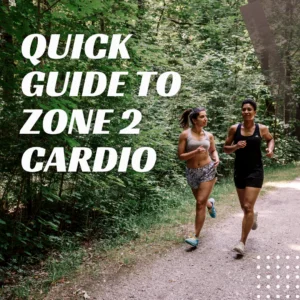On warm spring days, the number of joggers increases significantly.
How to start running so as not to get injured and not quit this activity as boring and tiring?
If you’ve never run before, the question may seem silly – how does running for weight loss differ from regular jogging?
Running for weight loss is slow and long.
It is recommended to start with 20 minutes of running and within a month increase the time to 40-60 minutes.
Don’t pay attention to speed and distance – for those who are losing weight, these numbers are not important.
To lose weight, it’s best to run 3-5 times a week.
For the first 2-3 months, dilute your running with walking: for example, run for 2 minutes and walk for 2 minutes, utilizing an under desk treadmill or a walking pad treadmill for added convenience.
If you have more than 5 extra pounds, be sure to walk while jogging!
This will help you not to experience a sudden loss of strength, not to injure your joints and spine, and not to overload your heart.
How to Determine The Load During a “Loss Weight” Run?
To lose weight, it is more convenient to run with a heart rate monitor. Now there are different options for gadgets : sports watches with a pulse sensor in the form of a chest strap, fitness bracelets that measure pulse directly on the wrist.
If you run to lose weight, it is recommended to calculate your heart rate using the following formula :
Subtract your actual age from 220 – the result is your maximum heart rate. Then multiply the result by 0.6.
This should be approximately your average heart rate while running. If you use a heart rate monitor or fitness bracelet, it will automatically calculate your heart rate for weight loss.
You can also focus on the general recommendation: run correctly to lose weight, with a heart rate from 110 to 136 beats per minute.
Please note: this is exactly the average heart rate; at each unit of time it can be slightly higher or lower, making use of the best foldable treadmill for effective workouts.
Finally, if you don’t have a heart rate monitor, just learn to run at a conversational pace.
This is especially useful if you are a beginner runner and are not sure that you will run regularly and therefore are not ready to acquire special gadgets. Conversational pace means that while running you are not out of breath, and at any moment you can say a phrase of 5-6 words.
If that doesn’t work, slow down and start walking more often, utilizing an under desk treadmill or a walking pad treadmill for convenient indoor workouts. In addition to running, you can also focus on diet and weight loss. You can read: Mastering Calorie Management for Effective Weight Loss.
What Time of Day is Best to Run for Lose Weight?
When is it better to run : morning or evening? There are supporters of both points of view, both among trainers and doctors. I will briefly list the advantages of both options.
1.It’s better to run in the morning than in the evening because :
During the night, the body has used up carbohydrate reserves and is forced to release fat reserves;
Morning jogging speeds up your metabolism throughout the day, which helps you lose weight even at rest;
In the morning, you are not yet tired and do not risk missing a run due to unexpected matters.
2.It’s better to run in the evening than in the morning because :
Running in the morning on an empty stomach, there is a risk of hypoglycemia (a sharp drop in blood sugar) and fainting from hunger.
In the morning, the blood is thickened after the night and it is difficult for the heart to pump it intensively while running.
Exercising vigorously before bed can lead to insomnia.
Most runners decide whether to run in the morning or evening based on practical considerations. That is, they run when they have time and energy. For example, “owls” crawl around like sleepy flies in the morning, what a run! Well, those who arrive at the office at 11 o’clock still prefer morning jogging. Utilizing the best compact treadmill ensures a consistent exercise routine regardless of the time of day.
Running Rules for Beginners
Are there any secrets that beginners don’t know about ?
If you run in the morning, then 15-30 minutes before running, eat something light and drink water. This will allow you to avoid those negative aspects that we talked about above: hungry fainting and stress on the heart due to thick blood.
The main thing is that the product is instantly absorbed. Options include a carbohydrate sports drink, banana and water, sweet tea or coffee, ensuring you have the energy and hydration needed for your run on walking pad treadmill.
Choose clothes that don’t restrict movement, and be sure to wear running shoes.
Specialized running shoes are what will protect your knees, hips and back from the negative effects of running.
For beginners, the right way to run is not on asphalt!
Grass, dirt track, rubber surface at a school stadium, dirt – that’s what you need.
If there are no options other than asphalt, be sure to buy running shoes with a high degree of shock absorption.
Otherwise, when you land, six times your entire weight will fall on your knees and spine. And start walking more often.
What Should a Beginner Runner's Running Technique Be?
There are several schools of running that argue about the ideal running technique. Proper running for beginners begins with a warm-up, but advanced runners also need to warm up their muscles and stretch their joints.
Usually this is a brisk walk with your arms bent at your chest, then a series of squats, lunges, and arm flexions and extensions, ensuring a proper warm-up routine before hitting the track or treadmill.
A beginner should run as follows : lean your body slightly forward, do not slouch, breathe regularly and do not pull your leg too far forward.
Do not lift your legs high, do not try to raise your knee to your chest or touch your buttock with your heel.
At the same time, do not “stick” your foot into the asphalt, ensuring a natural and comfortable stride.
You can land closer to the heel or on the middle part of the foot – it depends on your anatomical features.
(For people with a lot of excess weight and flat feet, the heel is more comfortable, and for those with a high arch, the foot is more comfortable).
When landing, the knee is slightly bent. Then roll your foot forward and push off with your foot, straightening your knee, ensuring proper alignment and minimizing impact on your joints.
You can breathe through your nose or mouth – again, it depends on your anatomical features.
Some trainers require you to place your foot only on your foot or inhale exclusively through your nose.
Don’t forget that running is a natural human movement. Therefore, for a beginner to run correctly in a style that is convenient for him personally, using only basic recommendations, and adjusting as needed to find a comfortable and sustainable running technique. In addition to running, you can also focus on diet and weight loss. You can read: Mastering Calorie Management for Effective Weight Loss.












